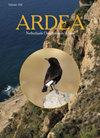使用人工鱼类避难所减少大鸬鹚的鱼类损失:改进避难所部署策略
IF 1.3
4区 生物学
Q3 ORNITHOLOGY
引用次数: 0
摘要
在2005年至2008年冬季,我们完成了一系列的成对池塘试验,以研究引入人工鱼类避难所对大鸬鹚长尾鸬鹚觅食行为、猎物捕获率和鱼类损失的影响,并帮助完善它们作为解决鸬鹚-渔业冲突工具的潜在用途。对一年内的避难所数量进行比较的调查提供了明确的证据,表明较大的避难所比较小的避难所能更好地保护鱼类。当跨年比较时,鸬鹚的避难所数量和猎物消耗率之间没有明确的关系。然而,当没有避难所的池塘与任何避难所的测试体积相比,食用量有很大的不同,这表明,在没有任何其他掩体的情况下,即使是很小的鱼类避难所的增加也能显著减少鸬鹚吃鱼的数量。进一步的试验表明,在减少鱼类损失方面,将避难所作为一个单一的较大结构引入比将相同体积的避难所安排为许多较小的、间隔较宽的离散单元更有效(每次鸬鹚访问的猎物减少50%)。试验进一步证实,鱼类保护区的有益作用并不因边缘生境的存在而受到损害;事实上,在添加模拟芦苇床的池塘中,猎物的消耗率降低了约30%。保护区的存在对鱼类损失率的影响因物种而异,其中蟑螂(Roach Rutilus Rutilus)尤其受益。研究结果在更广泛的背景下讨论了鸬鹚和它们的猎物之间的相互作用,以及鱼类保护区作为一种管理工具的潜在用途。本文章由计算机程序翻译,如有差异,请以英文原文为准。
Reducing Fish Losses to Great Cormorants Using Artificial Fish Refuges: Refining Refuge Deployment Strategies
A series of paired-pond trials were completed during the winters of 2005 to 2008 to examine the effect of introducing artificial fish refuges on Great Cormorant Phalacrocorax carbo foraging behaviour, prey capture rates and fish losses in trial ponds, and to help refine their potential use as a tool in addressing cormorant-fisheries conflicts. Investigations comparing refuge volumes within a year provided clear evidence that larger refuges offered fish better protection than smaller ones. When compared across years, there was no clear relationship between refuge volume and prey consumption rate by Cormorants. There was, however, a very large difference in the consumption rate when ponds with no refuge were compared with any of the refuge volumes tested, suggesting that, in the absence of any other cover, the addition of even very small fish refuges can markedly reduce the quantity of fish eaten by Cormorants. Further trials indicated that introducing refuges as a single larger structure was more effective at reducing fish losses than an equivalent volume of refuge arranged as a number of smaller, widely-spaced, discrete units (>50% reduction in prey consumed per Cormorant visit). Trials further confirmed that the beneficial effects of fish refuges were not compromised by the presence of marginal habitat; indeed, prey consumption rates were >30% lower in the pond with additional simulated reed beds. The impact of refuge presence on fish loss rates varied between species, with Roach Rutilus rutilus benefitting in particular. The results are discussed in the wider context of interactions between Cormorants and their prey and with regard to the potential use of fish refuges as a management tool.
求助全文
通过发布文献求助,成功后即可免费获取论文全文。
去求助
来源期刊

Ardea
生物-鸟类学
CiteScore
2.10
自引率
0.00%
发文量
49
审稿时长
>12 weeks
期刊介绍:
Ardea is the scientific journal of the Netherlands Ornithologists'' Union, and is published since 1912. The journal welcomes manuscripts reporting significant new findings in ornithology, in particular those covering the ecology, life history, and evolution of birds, and including sound descriptive work. Ardea publishes Original research papers, Short notes and Book reviews. In addition to the regular three issues per year, Ardea publishes specials that contain conference or workshop proceedings (produced on request).
 求助内容:
求助内容: 应助结果提醒方式:
应助结果提醒方式:


